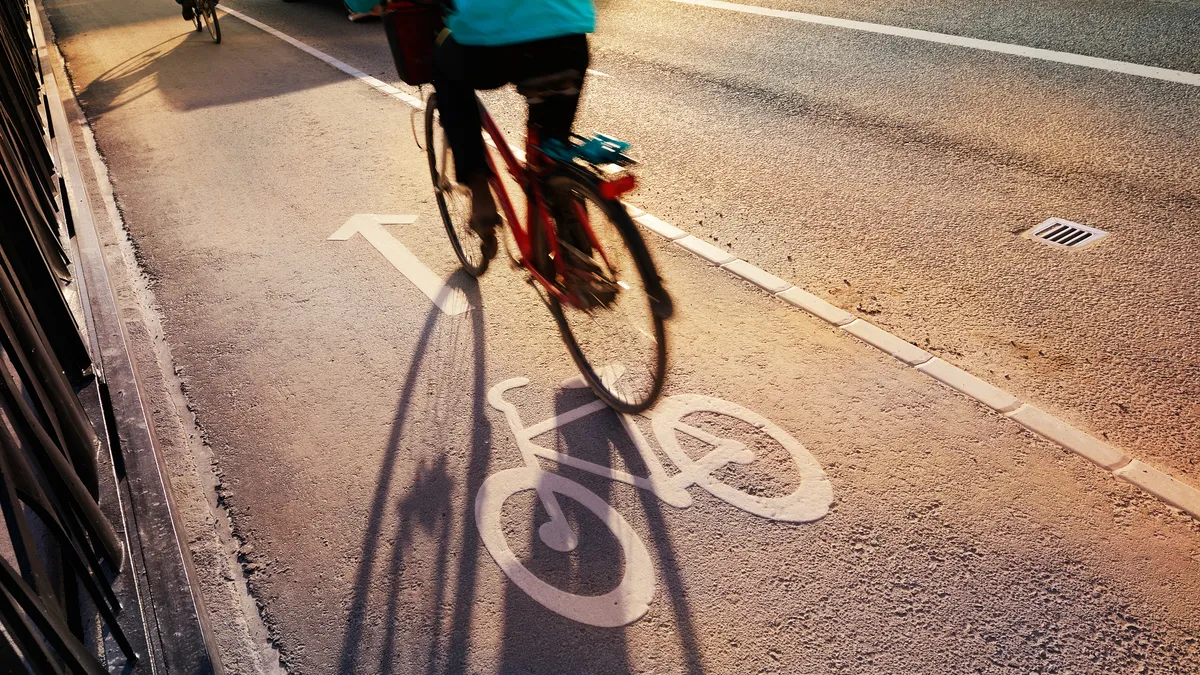Correction: A previous version of the brief spelled Michael Lydon's name incorrectly.
Dive Brief:
- The city of Atlanta released an updated guide to encourage communities to apply tactical urbanism projects as part of the city’s Vision Zero initiative to eliminate traffic deaths.
- Tactical urbanism involves short-term, low-cost infrastructure projects that can inform long-term or large-scale changes. That can include temporary parking changes, public art, demonstration bike lanes or slower speeds.
- Betty Smoot-Madison, mobility planning director for the Atlanta Department of Transportation, said the tactical urbanism projects are a “lower-cost and shorter-term” way to meet the city’s overarching goal of “reimagining and re-engineering our roads around people.” The pilot projects, she added, can even be extended or made permanent if they are successful.
Dive Insight:
Tactical urbanism projects differ from traditional top-down capital programs because of their temporary nature, relying on low-cost or temporary materials. Michael Lydon, principal of the consulting firm Street Plans and co-author of the 2015 book "Tactical Urbanism: Short-Term Action for Long-Term Change," said the approach allows citizens and community groups to be more empowered and involved in the planning process.
“A six-year-old could be as involved as an engineer or the mayor,” Lydon said. “The creation of that infrastructure and the priorities for the community become more open and that creates opportunities for further engagement and education.”
The projects also offer small-scale examples of how larger changes — like lower speed limits or lane shifts — could work. For example, Lydon said, enacting a temporary bike lane on a street can show how the change affects parking and access, allowing for the policies to be refined as they reach the city level.
According to the National Highway Traffic Safety Administration, an estimated 31,720 people died in motor vehicle crashes between January and September 2021, up 12% from the previous year. The Governors Highway Safety Association has also found that pedestrian deaths are rising, prompting calls for a system-wide approach to road safety and Vision Zero programs. That’s made tactical urbanism an appealing option for some cities. Denver, for example, has launched the vizion zero community program to encourage traffic calming and public art. Columbus, Ohio, has used temporary bollards and painting to test design changes at dangerous intersections.
Atlanta’s Smoot-Madison said there has been plenty of interest in tactical urbanism projects from community groups over the past two years as the COVID-19 pandemic forced cities to rethink the use of streets. The projects also help engage community members around their own priorities; while the city may have to focus on high-traffic corridors and major streets, neighborhood groups have a better sense of the dangers at local intersections that may receive less attention. For example, one project from the Kirkwood Neighborhood Organization that launched in 2020 used tactical curb extensions and lane narrowing tools to increase pedestrian safety on a residential street.
Atlanta released its first tactical urbanism guide in 2020 with a handful of possible projects, but Smoot-Madison said the city “didn’t stop working on the next version.” The new guide added instructions for six new project options: tactical slip lane closures, demonstration bike lanes, tactical bus stop enhancements, pedestrian space art and lane narrowing. Now the city will turn to education and community engagement, helping community groups craft and execute their own projects.
With so much interest in pop-up programs during the pandemic — including outdoor space for restaurants and temporary open streets for exercise — Lydon said the challenge for cities now is how to turn short-term projects into long-term change.
“Cities are getting better at that quick build approach and showing how they can be more nimble,” Lydon said. “What we need now is the process, the policy and the governance for how they go from interim to permanent. Projects that have been in the ground for a year need additional help in going permanent and not all cities have worked that out.”












